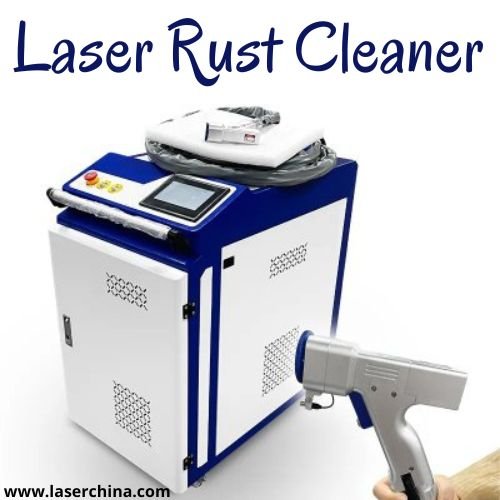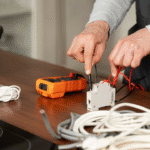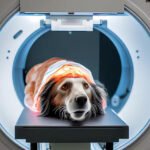Rust is the nemesis of metal surfaces everywhere. It weakens structures, ruins machinery, and can cause costly repairs or replacements. Traditional rust removal often involves harsh chemicals, abrasive blasting, or manual scraping — all methods that can be time-consuming, hazardous, or damaging to the underlying metal. But what if you could remove rust effectively without any chemicals or abrasive contact? Enter the laser rust cleaner, a cutting-edge solution revolutionizing metal maintenance and restoration.
What is Laser Rust Cleaning?
Laser rust cleaning is a process that uses highly concentrated light energy to eliminate rust from metal surfaces. Instead of grinding or using chemical solvents, it employs a focused laser beam that precisely targets rust layers, causing them to evaporate or disintegrate, leaving the bare metal beneath intact. This method is not only environmentally friendly but also extremely precise, ensuring that only rust is removed while the original metal remains unharmed.
The Science Behind Laser Rust Cleaning
The magic of laser rust cleaning lies in the physics of light interaction with rust particles. Rust, primarily iron oxide, has different thermal and optical properties than the underlying metal. When a laser beam hits the rusty surface, it rapidly heats the rust layer to a temperature high enough to cause thermal expansion and vaporization. Because rust absorbs the laser’s energy more readily than the metal beneath, the laser selectively heats and removes the rust without damaging the metal substrate.
This process happens incredibly fast and with remarkable control. By adjusting the laser’s power, frequency, and pulse duration, technicians can tailor the cleaning process to different types of rust, metal thicknesses, and surface conditions. This means whether it’s a thin rust film on delicate steel or heavy corrosion on industrial equipment, laser cleaning can be fine-tuned to handle the job perfectly.
How Laser Rust Cleaning Compares to Traditional Methods
Before laser rust cleaners, methods like sandblasting, wire brushing, and chemical baths dominated rust removal. These techniques have their merits but also significant drawbacks. Abrasive methods can alter the metal’s surface profile, sometimes weakening it or requiring additional finishing. Chemicals can be toxic, require careful disposal, and pose safety risks.
Laser rust cleaning sidesteps these issues entirely. It produces no waste in the form of dust or chemicals and minimizes physical contact with the metal. This drastically reduces the risk of surface damage or contamination, making it ideal for sensitive applications such as restoring antiques, precision machinery parts, or even aerospace components.
Applications of Laser Rust Cleaners
The versatility of laser rust cleaning makes it valuable across multiple industries:
- Automotive Restoration: Restoring vintage cars often requires careful rust removal to preserve original metalwork. Laser cleaning can remove rust from intricate parts without damaging delicate components.
- Shipbuilding and Marine Maintenance: Saltwater environments accelerate rust formation on ships and offshore platforms. Laser rust cleaning helps maintain these structures by providing rapid, chemical-free rust removal, essential for longevity and safety.
- Industrial Equipment: Factories rely on heavy machinery that often suffers from rust buildup. Laser rust cleaners can maintain equipment efficiency by quickly cleaning rusted parts during routine maintenance without disassembly or downtime.
- Cultural Heritage Preservation: Museums and conservators use laser cleaning to restore metal artifacts and statues where traditional abrasive or chemical methods would be too harsh or irreversible.
Why Choose Laser Rust Cleaning?
One of the most compelling aspects of laser rust cleaning is how it combines environmental responsibility with operational efficiency. Since it eliminates the need for harmful chemicals, it reduces the risk of environmental pollution and health hazards to workers. The process is also non-contact, meaning the metal surface remains undisturbed — preserving original finishes and structural integrity.
Moreover, laser rust cleaning reduces labor time significantly. The high precision and speed of laser beams allow rust removal in minutes compared to hours or days with conventional methods. This time-saving quality leads to lower overall maintenance costs and faster turnaround for industrial or restoration projects.
What Should You Expect During a Laser Rust Cleaning Session?
A typical laser rust cleaning operation begins with an assessment of the rusted item to determine the laser settings appropriate for the job. Operators then use a handheld or automated laser cleaning device, directing the laser beam over the rusted surface. As the laser moves, it heats and removes rust layer by layer.
The process produces little to no secondary waste; sometimes, fine dust particles from vaporized rust may be generated but can be controlled easily with standard ventilation systems. After cleaning, the metal surface is often left perfectly smooth and ready for repainting, coating, or further processing.
Safety Considerations and Operational Requirements
Laser rust cleaning requires specialized equipment and trained operators to ensure effective and safe use. Since lasers operate at very high intensities, protective measures such as safety goggles, controlled work environments, and adherence to operational protocols are essential. However, when handled properly, laser cleaning is much safer than chemical baths or abrasive blasting, which pose significant respiratory and environmental risks.
Emerging Trends in Laser Rust Cleaning Technology
The technology behind laser rust cleaners continues to evolve rapidly. Recent advancements include more compact, portable devices that allow for on-site rust removal, even in hard-to-reach places. Enhanced laser sources with adjustable wavelengths improve the ability to target different types of rust or corrosion, optimizing cleaning performance.
Integration with robotics and automated systems is another exciting trend, enabling large-scale industrial rust removal with minimal human intervention. These innovations promise to expand the reach and efficiency of laser rust cleaning across sectors.
How to Select the Right Laser Rust Cleaner for Your Needs
Choosing the ideal laser rust cleaner depends on several factors:
- Power Output: Higher wattage lasers can remove thicker rust layers faster, but may not be suitable for delicate items.
- Portability: Handheld units offer flexibility, while stationary systems may be better for fixed industrial setups.
- Laser Type: Fiber lasers and solid-state lasers are commonly used, each with unique advantages regarding wavelength and efficiency.
- Budget and Maintenance: Consider upfront costs, ongoing maintenance, and training requirements.
Many manufacturers offer customized solutions, so consulting experts to evaluate your specific rust removal needs is advisable.
Final Thoughts
The laser rust cleaner is transforming the way industries and restorers tackle the stubborn problem of rust. By harnessing the precision and power of laser technology, it offers a clean, fast, and environmentally responsible alternative to traditional rust removal methods. Whether preserving priceless antiques, maintaining critical infrastructure, or keeping machinery running smoothly, laser rust cleaning delivers unmatched results without the drawbacks of chemicals or abrasives.
As the technology continues to advance, its applications will only broaden, making rust removal safer, more efficient, and more accessible. Investing in a laser rust cleaner means investing in a future where metal surfaces can be restored and maintained with unprecedented care and precision—ushering in a new era of rust-free performance.


